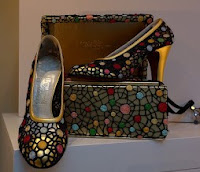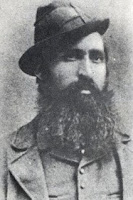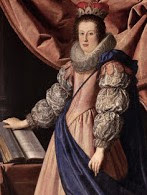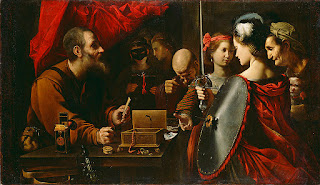Blackshirt thug turned air commander was Mussolini’s ‘heir apparent’
 |
| Italo Balbo was the commander of Italy's air force in the 1930s |
After active service in the First World War, Balbo became the leading Fascist organizer in his home region of Ferrara, leading a gang of Blackshirt thugs who became notorious for their attacks on rival political groups and for carrying out vicious reprisals against striking rural workers on behalf of wealthy landlords.
Later, he was one of the leaders of the March on Rome that brought Mussolini and the Fascists to power in 1922.
As Maresciallo dell'Aria - Marshal of the Air Force - he rebuilt Italy’s aerial warfare capability. At the height of his influence, however, he was sent by Mussolini to be Governor of Italian Libya.
Many believed that Mussolini saw Balbo as a threat and when, early in the Second World War, Balbo was killed when the plane in which he was travelling was shot down - seemingly accidentally - by Italian anti-aircraft guns over Tobruk, there were immediately those among Balbo’s supporters who believed the incident was not an accident.
 |
| Balbo (second right), with Mussolini and other Blackshirt leaders of the March on Rome in 1922 |
Balbo was politically active from a young age. After Italy initially declared itself as neutral in the First World War, Balbo joined in several pro-war rallies. Once Italy entered the war in 1915, he served with the Italian Royal Army.
He enlisted in the Alpini mountain infantry and won two silver medals for military valour, rising to the rank of captain. Later, after obtaining a degree in Social Sciences in Florence, Balbo went back to Ferrara and joined the Fascist Party, quitting his job as a bank clerk to be branch secretary.
Party members increasingly formed gangs and would behave aggressively towards opponents. Balbo proved himself as an adept gang commander. For several years, he led a unit called the Celibanisti, named after the squad’s ritual of ordering a specific cherry brandy in the afternoons at Caffè Mozzi in Piazza del Duomo.
 |
| An illustration from an American newspaper showing Balbo's squadron |
Balbo held a number of senior positions in the Fascist hierarchy under Mussolini, including Commander in Chief of the Militia (1922), Secretary of State for National Economy (1925), Undersecretary of the Air Force (1926), General of the Air Fleet (1928) and Air Minister (1929).
As commander of the air forces, he organised many spectacular displays of air power, often involving formation flying. His prestige soared after a visit to America in 1933 when, having made it his business to learn to fly, he commanded a squadron of sea planes that flew to Chicago to take part in the Century of Progress Fair. He was welcomed as a hero and President Roosevelt awarded him the Distinguished Flying Cross.
Just as his popularity was growing at home, however, Balbo was ordered to Libya as Governor-General of the Italian colony.
The appointment was an effective exile from politics in Rome, however. Mussolini was wary of Balbo’s close relationship with the suspected anti-Fascist Prince Umberto, the king’s son. Mussolini became so paranoid that he ordered that Italian newspapers could not mention Balbo's name more than once a month.
 |
| The site of the crash, including a makeshift grave, in which Balbo died when his place was shot down over Libya |
Balbo died on June 28, 1940. He was a passenger on a plane that attempted to land at Tobruk airfield shortly after an attack by British aircraft. Italian anti-aircraft batteries defending the airfield misidentified his aircraft as a British fighter and opened fire.
His remains were buried outside Tripoli and later moved to the cemetery at Orbetello in Tuscany, close to the airfield from which he flew his sea plane squadron to the United States in 1933, by Balbo's family. He is buried with many other airmen associated with the base.
 |
| The Este Castle at Ferrara in winter snow |
Apart from the impressively well preserved Castello Estense right at the heart of the city, Ferrara - situated midway between Bologna and Venice in Emilia-Romagna - has many notable architectural gems, including many palaces from the 14th and 15th centuries. Among them is the striking Palazzo dei Diamanti, so-called because the stone blocks of its facade are cut into the shape of diamonds. The palace holds the National Picture Gallery, which houses many works from the masters of the 16th-century School of Ferrara, including Lorenzo Costa, Dosso Dossi, Girolamo da Carpi and Benvenuto Tisi. Ferrara was ruled by the Este family between 1240 and 1598 and it was they who built the magnificent castle, work on which began in 1385.
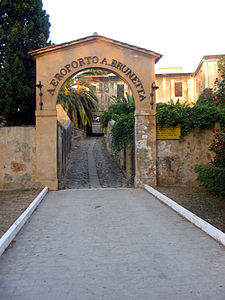 |
| The entrance to what remains of the seaplane base at Orbetello |
The remains of the Orbetello seaplane base, the military structure built at the beginning of the century and best known for its links to the squadrons commanded by Italo Balbo, are still visible in the town of Orbetello, which occupies a narrow peninsula surrounded by a natural lagoon on the coast of Tuscany, about 44km (27 miles) south of Grosseto. The field was used by the German Luftwaffe during the Second World War and the town was therefore hit by frequent air attacks. By the end of the war it was being used as an American base. Nowadays, it is in a state of semi-abandonment. The western area that was in charge of housing the officers' families is now called Parco delle Crociere and is used as a playground. Some structures are still standing, including the entrance, which bears the name of Agostino Brunetta, a seaplane pilot.
Home
